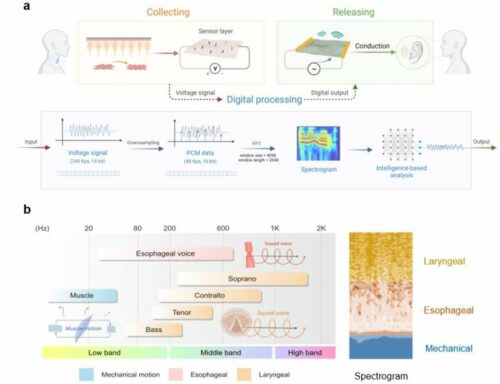Researchers have developed an artificial throat capable of recognizing speech elements and generate speech at an accuracy rate of 99%.

Prosthetics and wearable devices are ought to change medical technology by not only replacing a body part but also enhancing the human ability. Suppose our voice, if we sing too long and slightly over normal, we quickly learn how inconvenient it is to wake up the next day and realize we’ve lost our voice. Disruption of vocal cords is a very common problem and has very limited scope of being fixed, but technology can now make it possible.
A team of researchers at Beijing’s Tsinghua University have developed a simple device that addresses this problem. They designed a wafer-like tool one centimeter square that can easily be affixed to the throat and allow barely audible sounds, or even whispers, to be converted into speech at normal volume. Researchers refer to this device as a “graphene-based intelligent, wearable artificial throat.”
The 25-micrometer deep device may be applied to one’s throat with a simple adhesive. Tiny wires connect to a microcontroller powered by a coin-sized battery. This artificial throat is capable of recognizing speech elements such as phonemes, tones and words at an accuracy rate of 99 percent. It relies on an artificial intelligence model to interpret captured sounds and bodily vibrations to generate vocalizations.
Current strategies to communicate with voice-disabled patients rely on microphones attached to the body, but that is often unwieldy and considered a “non-friendly” user setup. Graphene sensors are ideally suited for detection of tiny vibrations on skin surfaces. The device “can sense muscle motions and audio vibrations transmitted to the surface of the skin” and “convert recognizable mechanical information into speech,” said research team leader Professor Ren Tianling. The device also works without interference from noisy, hostile environments such as highways, fire disasters and airplane cockpits.
Researchers plan to bring more expressiveness to vocalizations achieved by the artificial throat.





